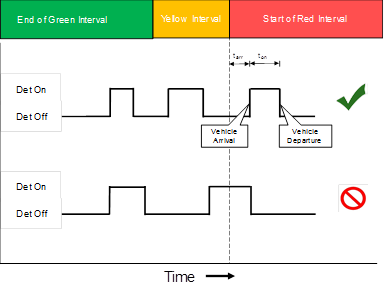Use of High-Resolution Signal Controller Data to Identify Red Light Running
This is a follow-up to my December post on signalized intersection safety. In particular, I would like to focus on a topic which I recently presented at this year’s Annual TRB Meeting. It centers on the subject of red light running (RLR), which is a major safety concern for public agencies.
The paper that this work is based on is titled “Use of High-Resolution Signal Controller Data to Identify Red Light Running,”and was submitted for publication and presentation at TRB as paper No. 16-0209. I am grateful, along with my co-authors, to receive this year’s Exceptional Paper Award from the Traffic Signal Systems Committee (AHB25) in recognition of this publication.
One of the biggest challenges with deploying safety countermeasures to reduce RLR crashes is collecting data to support the decision-making process; this difficulty arises on several levels. For one, from a purely logistical standpoint, the process of collecting crash data can be arduous and time-consuming. This includes the difficulty of poring over crash reports from various law enforcement agencies, each of which may have different reporting styles, interpretations of events, etc. Moreover, this process often relies on crash reporting over a number of years, such that intersections with unreliable data or relatively new construction cannot be evaluated using this methodology. From an emotional standpoint, there is the ever-present struggle of having to wait for the crashes to occur before countermeasures can be deployed. This can be especially potent when it comes to RLR crashes, since a high percentage of these involve fatalities or major, life-altering injuries. Having to wait for even one more fatal RLR crash to occur is a difficult position to justify to the public.

Figure 1. Red Light Running Identification: Hi-Res Data Concept. The valid RLR is identified by the green check mark.
As part of my dissertation, I worked on developing a methodology which can identify RLR activity based on high resolution signal controller event data. By measuring vehicle detections at the stop bar, in relation to the current signal state (red, yellow, or green), one can make a reasonable determination as to whether a RLR event occurred. An overview of this concept is shown in Figure 1. The concept itself is refined using various filtering mechanisms (many of which are described in the TRB paper), but the important contribution of this work is that it relies on existing traffic signal system infrastructure, and does not depend on RLR crashes having already occurred.
There is significant opportunity to further refine this methodology for different detector technologies, layouts, etc., but it is a step in the right direction. Especially in this age of “Big Data” analytics and intelligent infrastructure, it is critical that we as practitioners leverage the power of new technologies and data systems to work our way closer to the goal of zero roadway deaths. This will only be achieved by shaking up the status quo of engineering practice. While this RLR identification technique is not meant to replace the tried-and-true method of countermeasure deployment based on crash history analysis, it gives agencies a way to quickly deploy broader-spectrum, low-cost tools, such as targeted law enforcement or signal retiming.